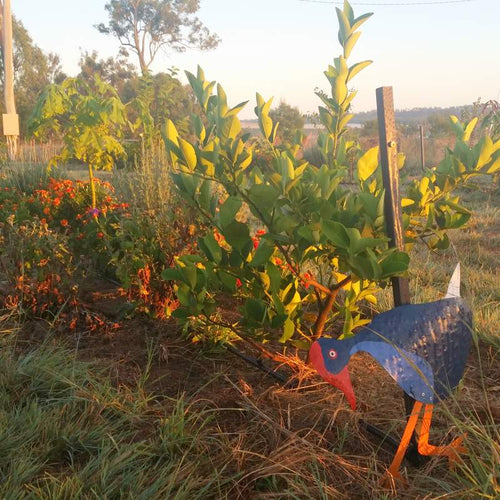Permaculture - Use and Value Diversity
In his book Permaculture: Principles and Pathways beyond Sustainability (affiliate link), David Holmgren, one of the founders of permaculture, has written about 12 design principles. The tenth permaculture principle is Use Small and Slow Solutions. In this post I summarise this chapter and give examples from my own experience.
Why is diversity important on farms?
Diversity is a really important principle to consider from a farming perspective because so much of agriculture is anti-diversity or monoculture. The ideal conventional agriculture concept is to use herbicide to kill everything in a paddock and then plant one crop, the plants will all grow to similar height and ripen at the same time, so that they can be easily harvesting mechanically. Then paddock is sprayed again. With livestock, again the ideal is to produce animals that all look the same, and most farmers stick to one type of animal only.
We have been experimenting with diversity
One summer we planted cow pea with our forage sorghum and the guys at the produce store thought we were mad when we were buying the seed, I would have liked to plant even more diversity, but we are experimenting gradually. What it comes down to is recognising that we can obtain a better yield overall by encouraging diversity.
Sure we might not have grown quite as much sorghum or as much cow pea as we would have done if we planted them separately, but together they both seemed to thrive and the cattle ate the whole lot. Generally if you have a diverse range of plants growing, any pest or diseases can't get established and wipe out the whole lot, the way they can in a monoculture crop. For that reason, we don't worry to much if we end up with some weeds or other grasses in the paddock, its all part of the diversity, as long as they don't take over.
A fine line between competition and synergy
As discussed in Integrate, Rather than Segregate, you can have too much of a good thing and end up choking out a weaker species that does need its own space, or some extra nutrients.
Pure breeds and lack of diversity
I found it interesting also that David discussed diversity within a breed and damage done by stud and show breeding. Where animals have been bred for particular physical attributes and not for practicality, for example show chickens that no longer lay well, we have lost an entire breed and virtually have to start again to create a breed that has the attributes that we as permaculture farmers need.
The ideal chicken lays well, has a large body suitable for eating, is able to forage, avoid predators, and survive in our climate, I don't care what it looks like! Braford cattle were originally bred for their hardiness, but after our bull got eye cancer we realised that some studs seem to be breeding for aesthetics and using too much Hereford, so that the animals are not as resistent to eye cancer as the original Braford breed. We need to value the diversity in animals so that we can establish breeds with desirable attributes in our own climate.
Diversity in the vegetable garden
In my garden, I like to use diversity by planting both edible plants and few flower plants and by also letting most plants go to seed. This encourages beneficial insects, both pollinators and predatory insects that feed on nectar, and reduces pest problems in the garden.
How do you use and value diversity at your place?
How do you use and value diversity at your place?
Find out more about Permaculture using these books (affiliate links):
And the other posts in this series:




















Leave a comment